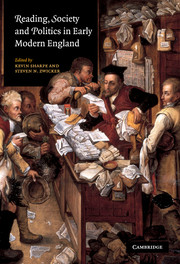Introduction: discovering the Renaissance reader
Published online by Cambridge University Press: 22 September 2009
Summary
Learning to read is one of our earliest rites of passage. Reading is the first test in a system of public pedagogy; acquiring its skills is our entrance into the world of letters. Reading makes possible at once public and private identity. Because learning to read is fundamental and reading is ubiquitous, it scarcely occurs to us that reading has a history, that its forms and practices have a past, that it is neither universal nor natural but socially specific and culturally constructed. Yet for all our insistence on the natural and the universal character of reading, we also recognize its difficulties and artificialities. Debates in educational psychology, the growing public awareness of dyslexia and the crisis over adult illiteracy serve to remind us that reading is neither natural nor ubiquitous, that geography, race and class are among the determinants that enable and delimit literacy.
To appreciate, in our own time, that reading is a variable product of circumstance impels us to address its history, to tell its stories of long continuity, of specific moments and of change. And our own moment is particularly opportune to return reading to its histories. In a broad public way, talk of the end of the book, the dominance of the electronic image and the pervasiveness of the sound bite not only suggest the fragility of literary culture but also underscore the historicity of reading.
- Type
- Chapter
- Information
- Publisher: Cambridge University PressPrint publication year: 2003
- 4
- Cited by



